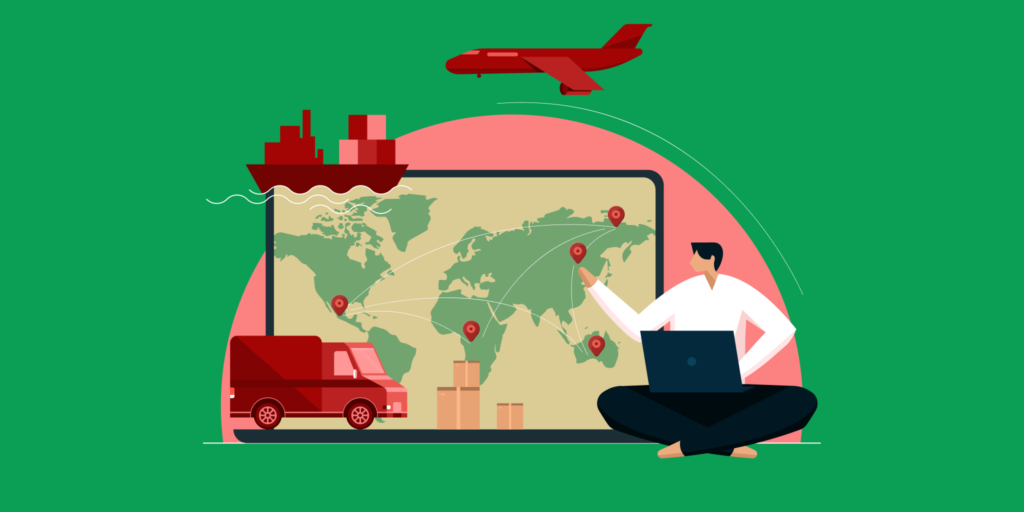Engage Suppliers to Drive Sustainability

Regardless of your organisation, the core value proposition of procurement remains cost competitiveness. However, in recent years Environmental, Social & Governance (ESG) has been elevated to a second-leading enterprise priority to address behind operational efficiency. More than 80% of CPOs cited these two priorities in a recent Deloitte survey, and ESG is one of the top areas where procurement plays an active, influential role in decision-making.
Procurement leaders have the opportunity to engage and collaborate with suppliers to balance cost, resiliency, ESG, and other factors. As our understanding of sustainable procurement evolves, there’s tension in balancing priorities between traditional metrics and sustainability measures.
CPOs must be proactive. All commercial firms measure financial profit, but 40% of CPOs reported their organisations don’t define or measure their own set of ESG factors, even though 60% measure suppliers on sustainability at some level.
Procurement is well-positioned to engage enterprise strategies to help drive supply-side transformation initiatives. In the survey, 63% of firms cited collaboration with the supply base on ESG initiatives and collaboration on spend categories such as direct materials, transportation, energy/utilities, facilities, real estate, travel, fleet and so on.
Globally, a growing tide of legislation and regulations is pushing companies towards sustainable procurement. However, benefits fall to the organisations as well. Adopting sustainable procurement practices pays off for organisations through risk mitigation, cost reduction, brand reputation, and revenue growth.
No procurement organisation can meet ESG targets without engaging and motivating its supplier base.
Define Your Sustainability Goals
Before you reach out to your suppliers, develop a plan for what you want to achieve and why. Will you focus on reducing emissions? Or prioritise social and governance goals? How will you expect suppliers to align their ESG performance with your goals? Establish outcomes based on the goals – assessing performance, identifying gaps, or collaborating on initiatives. Your goals will guide the entire engagement process.
For some aspects, such as CO2 emissions, industry standards exist or are in development. Rating agencies also offer ESG measurements to help shape your initiatives.
Segment Your Suppliers
Identify suppliers based on their ESG risks and opportunities. To optimise engagement, segment suppliers according to their ESG relevance and readiness and target your efforts accordingly. For example, you may focus on monitoring and compliance for high-risk suppliers and pivot to innovation and partnership for high-opportunity suppliers.
Factors such as location, sector, location, size, and practices will influence your expectations. Depending on capabilities, resources, or culture, some may be more willing or able to collaborate than others.
Sustainability rating groups can offer guidance in finding suppliers that support your goals, such as deforestation-free palm oil, sustainable forestry management, sustainable fishery practices, and more.
Assess Your Suppliers
Based on the segmentation results, assess current ESG performance and potential. A self-assessment questionnaire might be enough for low-risk suppliers. For others, conducting an on-site or third-party assessment might be necessary. Leverage external information sources such as industry associations, NGOs, and media reports. You want to understand your suppliers’ strengths and weaknesses, gaps and challenges, and opportunities on ESG issues.
Another useful tool is a maturity assessment. Many suppliers may not have the capacity to analyse their carbon footprint and its implications for their customers. Based on the results of this assessment, you can devise a program to meet suppliers where they are in their own sustainability journey.
Engage Your Suppliers
After you have assessed your suppliers, build a constructive and transparent dialogue on ESG issues. Involve not only your procurement team but also sustainability experts and external consultants. The goal is to share your expectations and listen to the suppliers’ perspectives and concerns to improve ESG issues performance.
Support Your Suppliers
A sustainability effort is the proverbial marathon, not a sprint. It’s a continuous process following a path to joint improvement as well as a means to deal with ad hoc issues that arise. Help your supplier base develop ESG capabilities and capacities to further your goals. Cooperative initiatives like corrective action plans, carbon reduction efforts, education and innovation programs produce rich data to help drive supplier improvement.
Evaluate Your Results
Finally, evaluate the results and impact of your program. Use the indicators and metrics you established to define your goals. Report to your suppliers the outcomes, such as ESG performance improvement, cost savings, risk reduction and innovation. Solicit feedback and testimonials from suppliers, customers, and other stakeholders. The evaluation aims to demonstrate your achievements and successes and identify areas for further improvement and learning.
From the hard lessons learned during the pandemic, risks from the climate crisis, cost volatility, and increasing regulations, sustainable procurement has emerged as a driver for long-term business resilience and growth. Embedding sustainability practices can drive broad enterprise value creation, reduce costs, improve brand reputation and stakeholder relationships, and make supply chains more resilient overall.
The Faculty Roundtable Members
Want to explore real-world case studies and participate in interactive discussions to help equip you with the tools to innovate and enhance sustainability through effective supplier engagements? If you’re a Faculty Roundtable member, join the masterclass this week with Katie Saha, ‘Engaging Suppliers to Drive Sustainability’ where you’ll learn how to:
- Grasp the critical role of supplier engagement in achieving sustainable procurement goals, laying the foundation for strategic and impactful partnerships.
- Learn effective strategies and approaches for promoting sustainable practices through collaborative partnerships with suppliers, ensuring tangible and lasting results.
- Learn from real-world case studies, extracting best practices and successful models of supplier engagement for sustainability, offering valuable insights for your own initiatives.
- Begin the journey of developing a comprehensive approach to communicate and align sustainability expectations with suppliers, fostering commitment and shared value creation for a sustainable future.